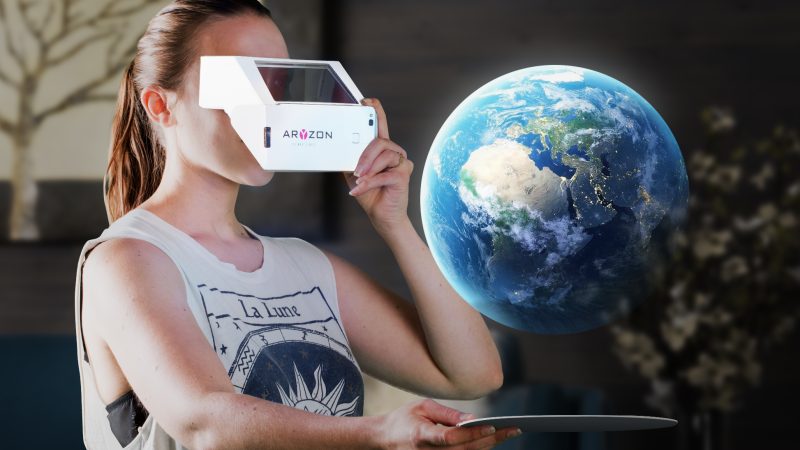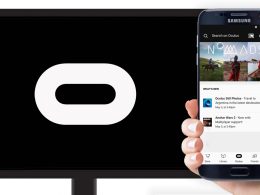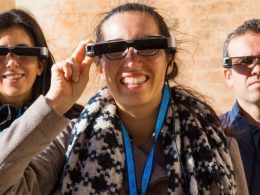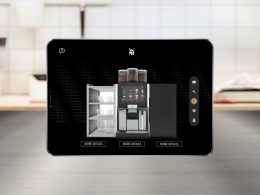AR glasses at a very favourable price
Five Master's students from the University of Twente (UT), specialising in "Industrial Design Engineering"want a Augmented reality glasses on the market, which costs just 29 euros. However, a smartphone is required. The glasses add 3D visualisations to the real world and, according to UT researchers, are comparable in terms of functionality to Microsoft's HoloLens, which costs USD 3,000. The students have now launched a crowdfunding campaign with their start-up Aryzon via Kickstarter was launched. The aim is to raise seed capital of at least 25,000 euros by 3 July 2017 (this has already been achieved). Quick decision-makers can even get the AR glasses for 24 euros via Kickstarter.
The new augmented reality glasses, also called Aryzon, are supplied as a kit in a cardboard box, which means they fit through any letter slot. The five Master's students have also developed a corresponding online platform that allows users to upload and download visualisations to use them with the AR glasses. The students hope that Aryzon's market leadership at a very favourable price will lead to more widespread use of augmented reality technology. One of the student entrepreneurs is Leon Schipper: "There are still no comparable glasses that are affordable for the masses. 3,000 US dollars is simply too much money for many people and companies. A museum, for example, won't invest in augmented reality glasses for its visitors if the glasses cost thousands of euros. With our low-cost solution, augmented reality becomes interesting and affordable for anyone with a smartphone. We are not competing with systems like HoloLens, we are complementing the market."
Comparable with HoloLens?
According to UT scientist Roy Damgrave, the Aryzon glasses nevertheless offer many functions that are comparable to those of HoloLens: "Some extremely complex functions are missing, whereas the Aryzon can be used without any major hurdles as it offers a selection of functions." According to Leon Schipper, the augmented reality glasses are suitable for a wide range of applications: "They can be used to furnish homes or make webshop products easier to experience using augmented reality. The glasses also offer valuable opportunities for museums and educational institutions. They can also be helpful for medical purposes. For example, when a physiotherapist can use 3D technology to explain to a patient why their knee hurts. During a test at a primary school, we let children look at an elephant with Aryzon glasses. They could make it walk and run and perceived the movement as lifelike. They were very enthusiastic about it. The glasses are also extremely suitable for developers of today's 2D augmented reality apps for smartphones. They can easily adapt their applications to Aryzon. A good example of this is Ikea's augmented reality app, which can be used to place pieces of furniture in 2D in your own home. The possibilities are endless."
Funding via Kickstarter
To the Kickstarter funding says Leon Schipper: "There are various packages to choose from on Kickstarter. Among other things, quick decision-makers can choose the Early Bird package. This gives them the Aryzon glasses for just 24 euros. We are creating a platform with visualisations that can be downloaded and used to reach as many people and markets as possible. Depending on the revenue, the platform will be expanded further. We want to become a kind of YouTube for augmented reality, the standard platform for augmented reality features."
Leon Schipper also reports on the development of the technology: "The development of the glasses was a challenge. There are many influencing factors. The incidence of light has to be partially reduced to enable projections. This requires special plastic lenses that ensure this reduction without obstructing the view in the real environment. We use Fresnel lenses, the quality of which is very important. We also take the user experience into account when designing 3D models. For example, the models have to come into view at realistic distances in order to be perceived as real. Good algorithms are essential for this. Our software also recognises the interaction between the fingers and the model. This allows you to zoom further into the model, for example. And we use high-quality cardboard."
Source: Press release









